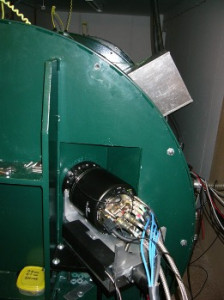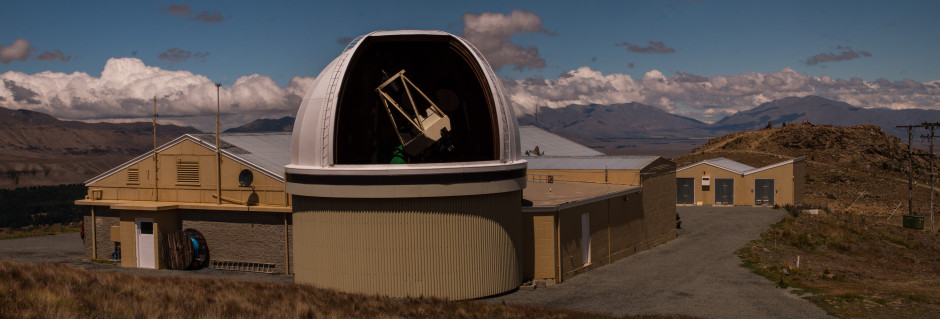Searching the world to get a better understanding of the stars
A Mackenzie District based research telescope and detector that discovered a planet outside our solar system needed a new camera.

Old CCD camera
Photo: University of Canterbury
Professor Roger Reeves, Head of School Physical and Chemical Sciences at Te Whare Wānanga o Waitaha University of Canterbury (UC) is the lead of this major project that has used GETS to find a solution.
“The specialised camera inside the Hercules Spectrograph at UC’s Mt John Observatory was at the end of its life,” says Professor Reeves, “so we went to market”.
The telescope needed a CCD (charge-coupled device) camera. A CCD camera uses a silicon-based chip to capture digital images. When light hits the chip, each pixel accumulates electric charge, which is then converted into a digital image.
“The sensitivity and size of the new chip will allow for highly detailed astronomical imaging, increasing the ability to look at more distant and fainter objects,”
Professor Roger Reeves Head of School Physical and Chemical Sciences at Te Whare Wānanga o Waitaha University of Canterbury
“The enhanced imaging capabilities will support research projects such as tracking objects within our solar system that could come close to Earth and studying galaxy formation to better understand their evolution throughout the Universe’s history.”
UC’s Procurement team has been leading the procurement project since September last year, using the GETS system to source the new CCD camera.
The team leveraged GETS as a structured and transparent platform to ensure the process followed government procurement principles and aligned with the University of Canterbury’s Procurement Policy. By engaging with the global market, they connected with potential suppliers and received competitive responses.
The project presented several challenges, including navigating the latest technological developments, assessing a diverse range of available options, and determining which specifications were essential.
With no suppliers available in New Zealand, comparing and evaluating bids required careful consideration due to the variations in technology, configurations, and specifications offered by different suppliers.
Through a structured and collaborative approach, the team successfully defined technical specifications, engaged the market effectively, and conducted a rigorous evaluation, leading to a well-documented and competitive procurement outcome.
The university and supplier expect the project to be completed this December. Meanwhile, they are considering two options for the old camera: transferring it to other research organisations or returning it to the supplier for repurposing, reuse, or recycling.
Facts about the Hercules Spectrograph:
- The Hercules spectrograph was uniquely designed and constructed in the Department of Physics and Astronomy at UC to operate on the 1-metre McLellan telescope at the Mt John University Observatory. The telescope had been similarly designed and constructed by the same department decades earlier in 1980’s.
- Hercules went into operation at Mt John in 2002 and was the world’s first high vacuum-stabilised high-resolution stellar spectrograph.
- A significant function of Hercules is the precise measurement of the rotation speed of stars. These stellar velocities range from a few km per sec up to hundreds of km per sec and Hercules can achieve precisions as small as a few metres per seconds.
- Hercules can be used to measure the chemical composition of stars, and stellar temperatures, pressures and surface gravity for stars by analysing the strength and shape of the spectral lines.
- The Hercules and its CCD camera have been involved in some significant work.
- In 2020, a team of UC astronomers and Hercules observed a nova, Latin for new star, in the constellation of Carina and helped prove that shock waves caused most of the nova’s brightness. A nova is a sudden explosion on the surface of a white dwarf, which is the hot, burnt-out core of a star.
- In 2016 Hercules and its CCD were also behind the discovery of an extrasolar planet orbiting the red-giant binary star nu Octantis. The planet was found by detecting small periodic velocity variations of the parent star.
